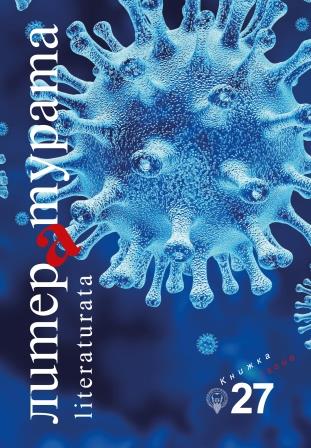Женското присъствие през междувоенния период. Психологически анализ на жените Дюлгерови от романа „Ана Дюлгерова“ на Яна Язова
The Female Presence during the Interwar Period. Psychological Analysis of the Dyulgerov Women in the Novel ‘Ana Dyulgerova’ by Yana Yazova
Author(s): Stefka TsenovaSubject(s): Philosophy, Language and Literature Studies, Studies of Literature, Aesthetics, Bulgarian Literature, Philology
Published by: Софийски университет »Св. Климент Охридски«
Keywords: Dyulgerov women; What is a woman without a man?; family; transition from tradition to modernity; transition from child to a woman
Summary/Abstract: The novel ‘Ana Dyulgerova’ is a peculiar representation of the female in the interwar years. It plays the role of an invocation to society to break the patriarchal moral standards and to wheel in the concepts of modern times. Through the images of the female characters, the author asks the readers ‘What is a woman without a man?’ and the answer is not so ‘modern’ at all. The interwar times suggest that a woman cannot exist as a member of society on her own, but only through her family i f needed. The story revolves around four main female characters: Vera Dyulgerova, Aunt Elena, Marga and Ana Dyulgerova. Through the images of each of these women, the author outlines both problems related to women’s emancipation and topics essential to the time between World Wars One and Two As the plot develops, the three faces of Vera unfold embodying the nature of the abandoned woman. In her fear of loneliness Vera is authoritative, hurt and angry. The position that the woman of the 1930s cannot exist as a single member of society is boldly defended through the image of Elena. This woman is permitted to be part of the community only as ‘Aunt’. The years between the two world wars are steeped with many antithetical ideas. These are both times of transition from tradition to modernity and of heated political beliefs. The rapid incursion of the communist ideas, preceding the further development of historical events, is represented through the image of Marga. We can assume that the idea of the emancipation of the woman in the interwar period is represented through the aforementioned ladies. The image of the unfortunate Anna Dyulgerova, on the other hand, introduces us to the ideas of the clash between province and city, the conflict ‘old’ – ‘young’, the problems with the modern woman’s education and the transition from child to a woman.
Journal: Литературата
- Issue Year: XV/2021
- Issue No: 27
- Page Range: 205-218
- Page Count: 14
- Language: Bulgarian
- Content File-PDF

